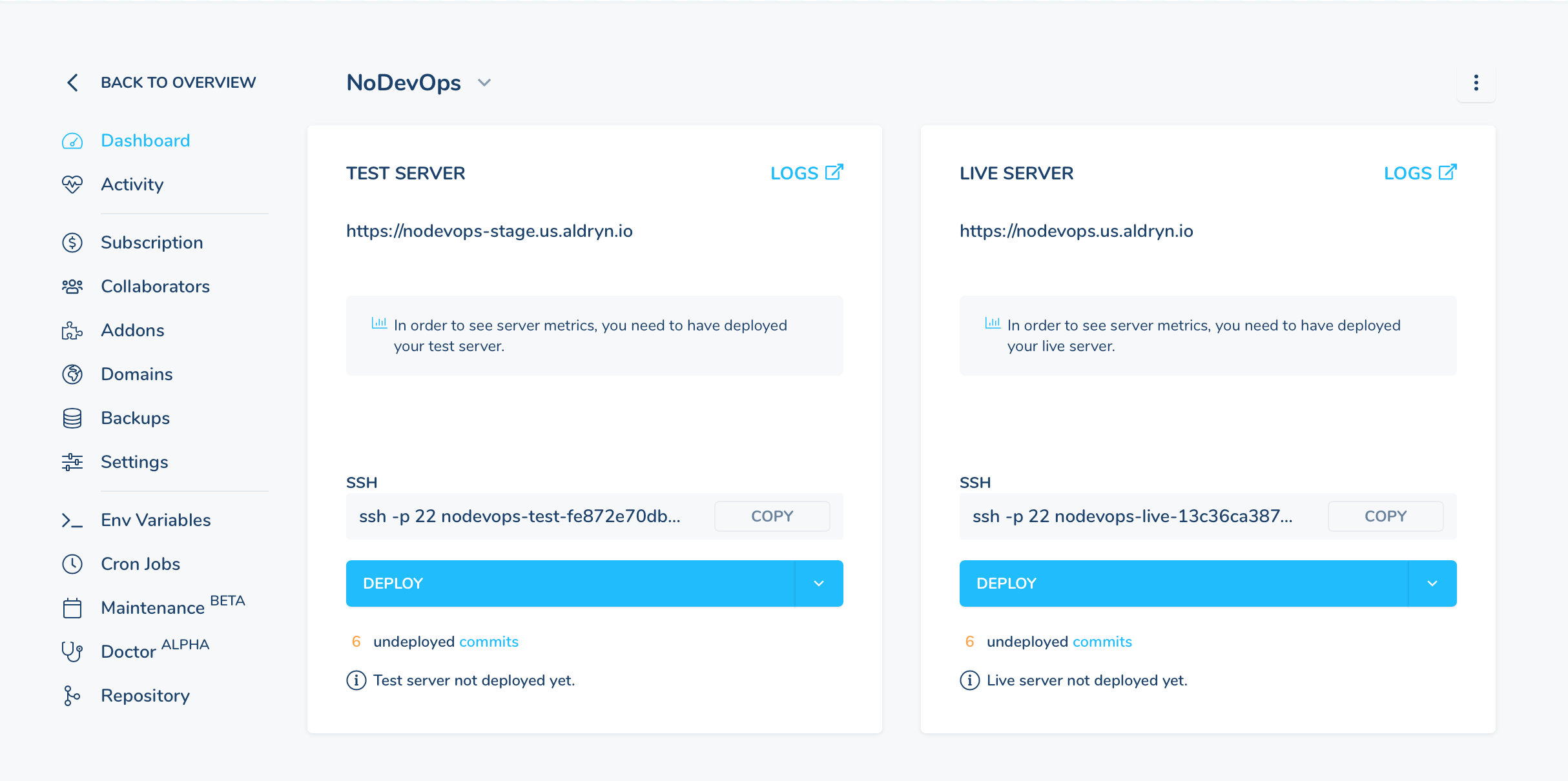What happens when a project is created¶
When a new project is created, you will see someting like this on the project dashboard:

As implied by the 6 undeployed commits message, the new project has a repository. This is what the infrastructure does:
A repository is created¶
The system creates a new repository. As an application developer, you could in fact have created that repository and everything in it yourself, but in this case, it’s created for you. You might even prefer to, and on some platforms you would be required to. For now, since the Divio Control Panel can do this for us, let’s work with it and consider alternatives later.
This Git repository contains all the instructions needed to build a Docker image for the project. It contains a
Dockerfile, describing the commands that must be run to build it, a requirements.in file, listing the Python
packages that will need to be installed, and so on.
This repository defines the application, the part that you as an application developer will be responsible for and will want to get your hands on. To the greatest extent possible, this application needs to be platform-independent. It should not care whether it is to be deployed on Divio or on some other platform (just like your skills, this application should be transferable with minimum extra work).
Divio Cloud developer handbook links
Services are provisioned¶
The Control Panel has provisioned services for the new application. (As an application developer who doesn’t want to be doing DevOps, you should be thrilled to discover the Cloud Platform has taken care of this for you.)
The database, media storage, web server and other services have not only been set up for you, your project is ready to use them right away.
It has done this for two environments, Test and Live. On Divio, your Test server is a private staging environment, while Live is the public server.
Other Cloud providers may offer a similar arrangement, but in any case the important point is that given a single respository, you can deploy it in multiple environments, and all Cloud hosting providers will make this easy.
Environment variables are configured¶
You may be used to including things like database credentials in settings files, or perhaps in multiple settings files for different environments. It’s a good idea to keep those things out of your respositories. They aren’t code, they are configuration, and they belong to environments.
So, we store them in environment variables, and each environment has its own set of variables. All the repository contains is a way to look for the variables and turn them into the appropriate Django settings.
Divio developer handbook links